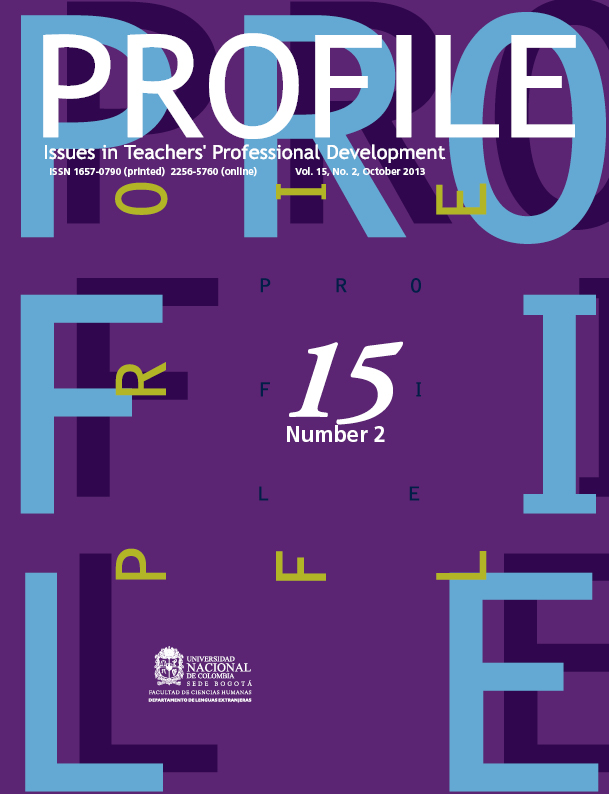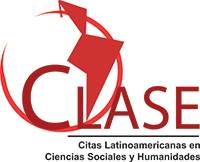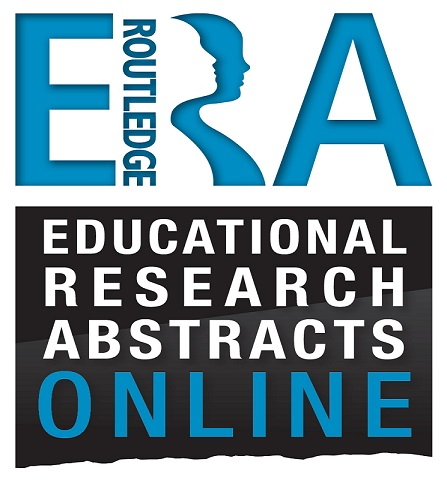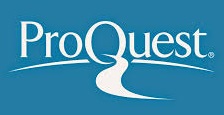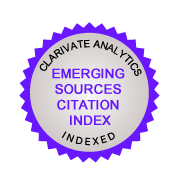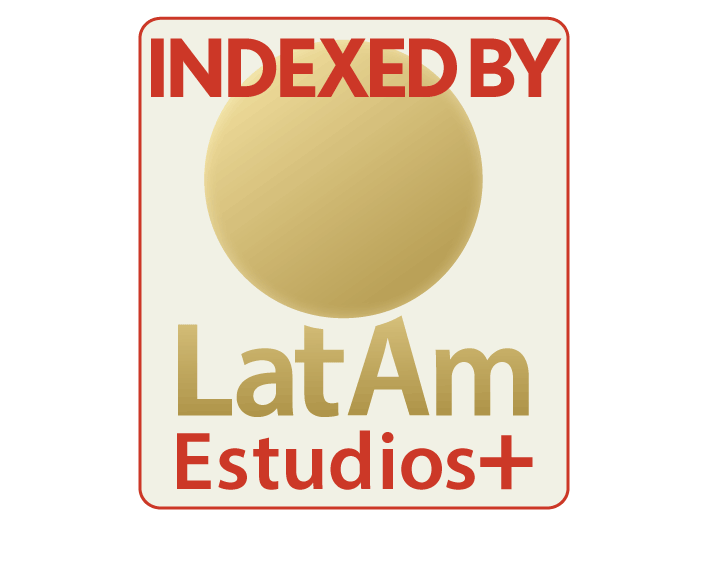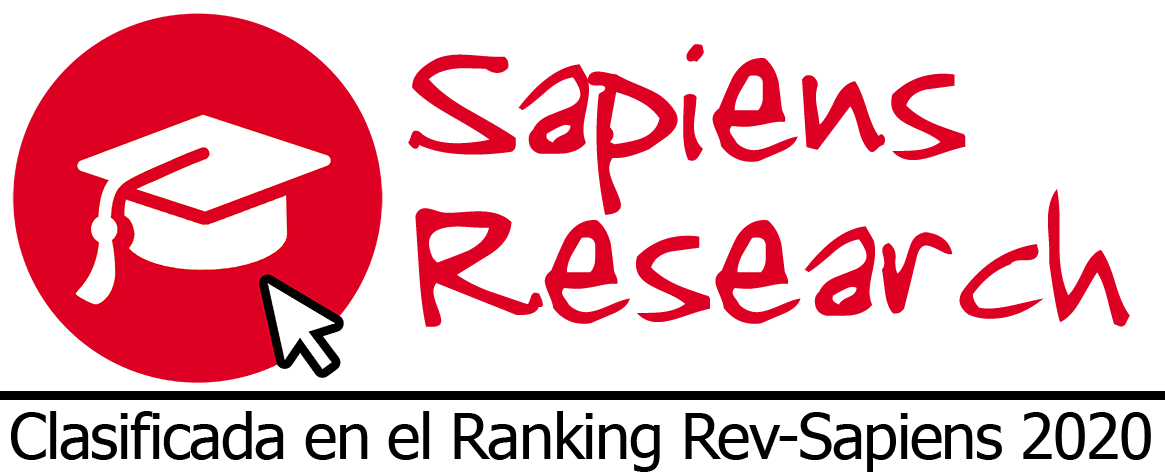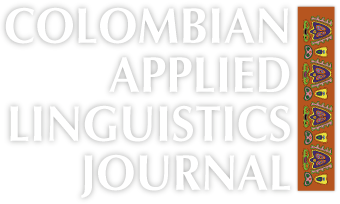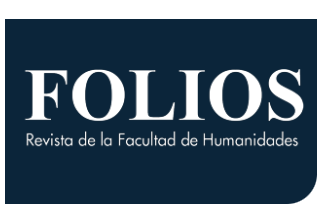Student-Teachers’ Teaching Techniques: Actors in Pupils’ Extrinsic Motivation as They Speak
Keywords:
Development of speaking skill, EFL student-teachers, extrinsic motivation, teaching techniques in EFL (en)This article describes a research project we carried out in order to study the role of student-teachers’ teaching techniques as regards their pupils’ extrinsic motivation as they partake in communicative speaking activities at a public school in Tunja, Colombia. Data were gathered by means of field notes, focus groups and student-teachers’ documents. Findings revealed that student-teachers assume different roles regarding their teaching techniques depending on the stage of the class (presentation, practice, and production). The techniques, at the same time, constitute the nature of these roles. Explorers, keepers, and producers were the main roles that participants assumed when they involved their students in communicative speaking activities.
Este artículo describe un proyecto de investigación llevado a cabo para estudiar la función que tienen las técnicas de enseñanza empleadas por los docentes practicantes en la motivación extrínseca cuando sus estudiantes participan en actividades orales comunicativas, en un colegio público de Tunja (Colombia). Los datos se recolectaron por medio de notas de campo, grupos focales y los planes de clase de los futuros docentes. Los resultados revelaron que las técnicas de enseñanza empleadas por los practicantes tienen diferentes funciones dependiendo de la etapa de la clase (presentación, práctica o producción) en que se usen. Los principales papeles que los participantes adoptaron al involucrar a sus estudiantes en actividades orales comunicativas fueron: exploradores, cuidadores y productores.
Student-Teachers’ Teaching
Techniques: Actors in Pupils’ Extrinsic Motivation as They Speak
Técnicas
de enseñanza de los docentes practicantes: actores en la
motivación extrínseca de los estudiantes a la hora de hablar
Leidy Tatiana
Báez Dueñas*
Leidy Marcela
Chacón Vargas**
Universidad Pedagógica y Tecnológica de
Colombia
This article
was received on December 8, 2012, and accepted on July 1, 2013.
This article
describes a research project we carried out in order to study the role of
student-teachers’ teaching techniques as regards their pupils’
extrinsic motivation as they partake in communicative speaking activities at a
public school in Tunja, Colombia. Data were gathered
by means of field notes, focus groups and student-teachers’ documents.
Findings revealed that student-teachers assume different roles regarding their
teaching techniques depending on the stage of the class (presentation,
practice, and production). The techniques, at the same time, constitute the
nature of these roles. Explorers, keepers, and producers were the main roles that
participants assumed when they involved their students in communicative
speaking activities.
Key words: Development
of speaking skill, EFL student-teachers, extrinsic motivation, teaching
techniques in EFL.
Este artículo describe un proyecto de
investigación llevado a cabo para estudiar la función que tienen
las técnicas de enseñanza empleadas por los docentes practicantes
en la motivación extrínseca cuando sus estudiantes participan en
actividades orales comunicativas, en un colegio público de Tunja
(Colombia). Los datos se recolectaron por medio de notas de campo, grupos
focales y los planes de clase de los futuros docentes. Los resultados revelaron
que las técnicas de enseñanza empleadas por los practicantes
tienen diferentes funciones dependiendo de la etapa de la clase
(presentación, práctica o producción) en que se usen. Los
principales papeles que los participantes adoptaron al involucrar a sus
estudiantes en actividades orales comunicativas fueron: exploradores,
cuidadores y productores.
Palabras
clave: desarrollo de habilidad oral,
docentes de inglés en formación, inglés como lengua
extranjera, motivación extrínseca, técnicas de
enseñanza del inglés.
Introduction
Due to the
fact that in Colombia the EFL teaching process is more demanding every day,
analyzing the different factors that take place in the daily teaching practices
for qualifying this process is a must. However, in a context like the
student-teachers’ practicum, the issues related to teaching techniques,
students’ extrinsic motivation and oral skills deserve special attention
as they have not been deeply explored. So, it is highly important to analyze
how these elements work together for enhancing teaching practices.
In that
respect, our initial concern to develop this project emerged from our personal
experiences as student-teachers in a public school in Tunja.
In this context, students’ motivation to perform in English as a foreign
language was extrinsic; their oral participation mainly depended on external or
physical rewards, so student-teachers were moved to use them as a tool in the
development of their pupils’ speaking skill. This was done with the
purpose of implementing a communicative approach.
Bearing in
mind this previous assertion, we feel it is crucial to bring up the constructs
from interactionism, one of the EFL acquisition theories, as it emphasizes the
importance of communicative contact between speakers, a statement supported by
authors like Pica (1994) and Long (1985) when they assert that conversational
interaction facilitates FL acquisition under certain conditions. This assertion
should guide student-teachers to reflect on those techniques that take part in
encouraging students as regards their speaking development.
In terms of
such techniques, it was valuable to think about the activities implemented by
student-teachers when conducting the English teaching and learning process. As
these strategies appeared as sources of motivation, their relationship with
students’ extrinsic motivation during their practice of oral skills in
English required a wide exploration.
In that
sense, reflecting on the global EFL context, we see that motivation is one of
the factors that influences the extent to which people
succeed or fail in any learning process. It is easy in language learning to
claim that a learner will be more successful with a type of intrinsic
motivation, but it has also been said that some individuals “have little
capacity for internal motivation and must be guided and reinforced constantly.
The use of incentives is based on the principle that learning occurs more
effectively when the student experiences feelings of satisfaction”
(Weller, 2005, “Internal Motivation is Longer Lasting,” para. 1).
Equally
important, at the national level, La Ley General de Educación
(Ministerio de Educación
Nacional [MEN], 1994), states that communicative
competence development in a foreign language has to start at the early
educational levels. All the same, the curricular guidelines for teaching
English (MEN, 2006) establish that language teaching has been deemed relevant
in using the language as a key element of communication through interaction; so
it demands the application of techniques in the foreign language teaching
process that keeps students motivated to use English orally.
Unfortunately
in our immediate context there is a lack of studies focusing on
student-teachers in order for them to characterize their teaching techniques.
One of the reasons why this situation has not been explored, as it should be,
is because most of the time current research has been focused on
students’ intrinsic motivation and the activities teachers use to promote
it following the thought that, as indicated by Bruner (cited in Brown, 2000),
“one of the most effective ways to help students think and learn is to
free them from the control of rewards and punishments” (p. 165). So this
project was focused on the counterpart of this issue. Then its main purpose was
to analyze and characterize the role of student-teachers’ teaching
techniques regarding their pupils’ extrinsic motivation as they partake
in communicative speaking activities at a public school in Tunja.
From this
situation, we realized the considerable responsibility student-teachers have in
encouraging their students to speak in class because this is one of the most neglected
skills in these settings, even though foreign language acquisition theories are
based on communicative principles. In our immediate context, students felt
excited to speak in class when their teachers provided them with rewards or
positive feedback. Then, it shows that students do not necessarily use English
in class just because they are intrinsically motivated. It means that the
techniques used by the teacher can be one of the ways to cause the speaking
skill to become a need for students. In that respect, Vilímec
(2006, p. 33) claims that the “teacher’s main task will therefore
be to make sure that the students know what to practice, and that they practice
effectively, together with organizing the activities and checking while
students are performing.” In that sense student-teachers’
techniques constitute an important factor concerning students’ motivation
to learn English.
At the same
time, this study also considered a population that was not a common source of
research, perhaps because of its little experience in teaching. In that way, it
was interesting to know how student-teachers as members of a new generation in
the educational field put into practice their pedagogical knowledge for
achieving the goals of English teaching based on the students’ extrinsic
motivation.
Literature Review
Bearing in
main the main objective of this study, one sees that this chapter provides
theoretical considerations under which it was framed as well as our own
conceptual constructs.
Appealing to
the student-teacher concept, there is one that is closely related: pre-service
teaching. This is understood by Schön (as cited
in Wallace, 1991) as “the stage where beginning teachers obtain
substantial on-campus coursework that they expect to transfer directly to the
in-school practical setting where they begin to act as a teacher” (p.
13). It means that pre-service teachers are those prospective teachers who are
putting into practice their knowledge in a real classroom environment after a
complete teaching training program. Along with this concept, it is also
meaningful to mention that novice teachers constitute a source of creativity,
innovation, and motivation that spring up in the implementation of strategies
geared to their students’ benefit.
This is related
to the results of the study conducted by Gürbüz
(2006) whose aim was to investigate student-teachers’ own perceptions of
pre-service English language teachers’ strong and weak areas of language
teaching practice in a Turkish context. In Gürbüz’s
words, outcomes showed that student-teachers were very good at preparing
visually attractive, colorful, and creative materials appealing to
students’ needs and interests, and catering to all learning styles and
all types of intelligences.
Secondly,
they were able to create a positive and receptive learning atmosphere in class
and to establish rapport with students. Their good interactional skills in the
classroom were directly related to their motivation and enthusiasm in teaching.
Although student-teachers themselves did not list motivation as their strength,
it was easily observable in their creativity and effort regarding their
materials and activities preparation. Finally, another point not mentioned by
student-teachers was good lesson planning, which emerged as a
strength in their teaching.
The other
theoretical layer from those established in the research question is teaching techniques. These have been
understood as the implementation of activities that teachers carry out in their
classroom with their students. Bearing in mind the goals they set, educators
work in specific areas of the teaching process. In that respect, we found
Brown’s assertion useful (as cited in Gavilán,
2008). He claims that:
A teaching
technique is a superordinate term to refer to various activities that either
teachers or learners perform in the classroom since they include all tasks and
activities. In addition, they are almost planned and deliberate, considering
they are the product of a choice made by the teacher that can be addressed to
the pedagogical units or components of a classroom session. (p. 165)
At the same
time Crookes (2003, p. 144) states that, “an activity is a segment of
classroom life. . . intended to cover all
distinguishable behavioral segments in a classroom.” Following this line
of thought, we feel it is clear that even though teachers’ planning
includes the activities to be developed in the classroom, these intentions are
influenced by how actions actually take place, depending on the stages of the
class, as well as students’ characteristics (learning styles, type of
motivation, interests, needs, etc.), among others.
We can say
that teaching techniques acquire sense depending on how they are implemented by
educators; additionally, the objective they pursue is based on their
students’ needs. So, it implies the design and application of different
activities that respond to both teachers’ use of strategies and the
objectives of class segments.
Appealing to
the literature, there is a study carried out by Gavilán
(2008). Its outcomes gave us lights as to characterizing the nature of teaching
techniques. The chief aim of this research was to describe the activities
implemented by two first-semester English teachers and categorize them within
the frame of language teaching techniques stated by Brown (2001): controlled,
semi-controlled, and free within the context of a languages teaching program.
The techniques used for data collection were based upon class observations,
teachers’ logs, and a semi-structured interview.
Looking at
the outcomes of this investigation, we can say that teaching techniques acquire
sense depending on the control teachers place on them; additionally, as already
mentioned, the objective they pursue is based on their
students’ needs. So, it implies the designing and application of
different activities that respond to both the teachers’ control and to
the objectives of the class segments. At the same time, the accomplishment of
such objectives is intrinsically related to the students’ abilities to
face the challenges through the instructional segments of a class.
Extrinsic
motivation is the following key concept we will discuss. It is important to say
that in spite of the fact that intrinsic motivation is more valuable and
permanent than the instrumental one, it has also been demonstrated that
students need outside stimuli (grades, prizes, extra points, public
recognition, etc.) as a guarantee for successful performance in classrooms.
This aspect is reinforced by Akey (2006) when she
claims that “in the educational setting, students need incentives to
perform, so one of the real situations that teachers must face is to provide
students with tangible rewards” (p. 5). At the same time, Deci (1972, p. 23) explains that “extrinsically
motivated behaviors are carried out in anticipation of a reward from outside
and beyond the self. Typical extrinsic rewards are money, prizes, grades, and
even a certain type of positive feedback.”
Those
outcomes provided us with contributions in terms of understanding extrinsic motivation
as a way of making students more confident when achieving the learning goals
that an activity enhances in their learning process. Rewards cannot be enough
to sustain the idea of an intrinsically motivated student, but they can be
sufficient for maintaining extrinsically motivated students’ effort at
any task as well as at any skill development.
To support
the previous assertions, there is an exploration about different ways in which
motivation has been conceived according to the development of teaching and
learning approaches in psychology and in TESOL (Teaching English to Speakers of
other Languages). It was conducted by Bastidas (2006)
who called it “A Framework to Understanding Motivation in the TESOL
Field.”
In this
article the author presents an overview of the approaches used to contextualize
motivation in psychology and apply it to TESOL. This study states that
traditionally, motivation was studied in behavioral terms in the psychological
context. In the TESOL field, two types of motivation were proposed:
instrumental and integrative. In recent studies, the study of motivation from a
cognitive perspective, where intrinsic and extrinsic orientations are its main
constructs, has been proposed.
The light
coming from this study lets us understand the value and the importance of the
outer world in students’ learning. On the contrary, it must be a
motivational channel through which intrinsic force surrounded by the extrinsic
one results in more realistic, authentic and meaningful experiences in the EFL
classroom.
The last
spinal cord concept for this investigation was communicative speaking activities. Looking at the theory, Brown
(1994, p. 245) stated that among the most important features in communicative
language teaching (CLT), the following aspects are present or noteworthy:
“Language techniques are designed to engage learners in the pragmatic,
authentic, functional use of language for meaningful purposes. In the
communicative classroom, students ultimately have to use the language, productively
and receptively, in unrehearsed context.” It means that what turns an
activity into a communicative one is the opportunity students have to express
their thoughts and feelings as clearly and concretely as possible which leads
them to gain confidence and achieve the communicative goals when facing any
oral or written situation. Likewise, through communicative activities learners
establish relationships with others where they negotiate meaning and assume
different roles.
Considering
the speaking skill and its connection with communicative activities, we found Littlewood’s taxonomy (1991, pp. 16-36) useful. He
classified communicative activities into two further categories: functional
activities and social interaction activities. In regard to the first one, the chief
goal is to encourage students’ ability to use the language they know to
achieve the goals of communication like solving problems or making decisions.
Turning to the second one, the social interaction activities attempt to extend
the pragmatic use of the language. It means that communication is mediated by
the context in which its participants have to adapt their discourse in terms of
how, when, where, and what to say.
Research Design
With the
purpose of answering the question stated in this study, we followed the
principles of qualitative research, defined by Merriam (as cited in Nunan, 1998, p. 77) as “an intensive, holistic,
descriptive analysis of a single entity, phenomenon of social unit.” This
approach was selected because the project was framed in a social environment
where a specific situation was described, analyzed and characterized. Moreover,
this research was descriptive as well as interpretative, guided by the case
study approach. This methodology is defined in Yin’s terms (1984, p. 23)
as “an empirical inquiry that investigates a contemporary phenomenon
within its real-life context; when the boundaries between phenomenon and
context are not clearly evident; and in which multiple sources of evidence are
used.” It also presented a detail account of the phenomenon under study
and contains a description to collect information in order to interpret and
construct new knowledge.
Setting and Participants
This
research took place at a public school in Tunja,
Colombia, where our participants were immersed, more specifically at
Universidad Pedagógica y Tecnológica
de Colombia (UPTC). The participants in this investigation were tenth semester
pre-service student-teachers in the Modern Languages Program at UPTC. This was
a group of three people. The three pre-service teachers were particularly
selected because their practicum took place at a public school where the two
researchers had a good opportunity to get the data. Those student-teachers were
in the last phase of their university formation, but also in the first stage of
their professional life. It means that they possessed knowledge of different
disciplines that are present in their program curriculum i.e. Pedagogical
Projects, Communicative Projects, Didactics I and II, Applied Linguistics,
Grammar, Phonetics, Literature, etc. In addition, they had previously had
experiences in teaching English for about thirty sessions or classes throughout
their eighth and ninth semesters.
Data Collection Instruments and Methodology
With the
purpose of achieving the research objective of this investigation, four
instruments were used: field notes, focus group (audio recorded meetings),
student-teachers’ documents (lesson plans) and students’
interviews. Thirty observations of the student-teachers’ classes were
conducted and recorded in a form (see Appendix A). This
instrument was structured into two main parts. In the first one, the
researchers wrote a detailed description of what happened in the classroom. In
the second one, the information gathered in the first part was organized as
well as connected with theory. Each participant was observed ten times for the
purpose of achieving the following objectives: To identify the oral teaching
techniques as well as the different extrinsic motivators (rewards, positive
feedback) implemented by pre-service teachers as their students developed
speaking activities.
Secondly we
audio recorded four focus group sessions with the three participants along the
development of the project. The chief discussion topics were: The type of activities
that student-teachers conducted in class for students to talk; the extrinsic
motivators used in class; the teaching sequence that was followed in class and
the different topics and materials implemented (see Appendix B).
The
student-teachers’ documents were the third instrument adopted. In this
project the documents were the pre-service teachers’ lesson plans which
participants had prepared for their classes. Thirty of those were taken for the
analysis. The purpose was to see what types of activities the student-teachers
designed and how those activities were related to their students’
extrinsic motivation as they developed their speaking skill.
At the same
time, a semi-structured interview was applied to forty-five students to get
their perceptions about the activities their teachers implemented in class and
how those learners got involved in them (see Appendix C).
The
methodology implemented for analyzing the data collected was based on grounded theory, Strauss and Corbin
(1990). The cornerstone of this premise revolves around coding procedures,
defined as the steps through which the information is divided, conceptualized
and reintegrated in different ways. Based on that, once the information was
gathered, the analysis process started. We made a detailed reading to study the
primary instrument and to establish common issues, which were validated with
the information provided by the secondary ones.
Our use of
primary and secondary instruments entailed a data triangulation process. In this
respect, it is important to say that two types of triangulation were used. The
first type was methodological triangulation (Cohen, Manion,
& Morris on, 2000), as previously explained, with the use of various
instruments for data collection. The second one was investigator triangulation.
In that sense, each piece of information collected through each single
instrument was analyzed in an individual form. Then, the findings were analyzed
to establish common patterns.
In addition,
evidence was encoded for facilitating the presentation of the findings. In that
respect, field notes were codified as (FN); group interviews as (GI); focus
group as (FG); pre-service teachers’ documents as (PD) and video
recordings as (VR). Furthermore, the participants were given fictitious names
keeping in mind the ethical principles in research, for respecting the
participants’ image and privacy. Additionally, the participants’
narratives were translated into English by the researchers.
Findings
Figure 1 summarizes the study’s emerging categories,
which are presented in a metaphoric way; we have associated them with the role
of a sower when following the three different stages of seed growth. The sower
is the symbolic representation of student-teachers’ teaching techniques,
in which the student-teachers assume different roles depending on the three
main stages of growth (seed sowing, seed growth, and hay harvest). These, in
turn, reflect the three main phases that student-teachers follow in their
classes: presentation, practice, and production. These stages constitute the
nature of the intensity or use of student-teachers’ teaching techniques
in this investigation. Those categories are: Teaching Techniques: Explorers for
Sowing the Seed, Teaching Activities: Keepers During
Seed Growth, and Teaching Strategies: Producers at the Harvest.

Teaching Techniques: Explorers for Sowing the Seed
This
category concerns the significance student-teachers’ teaching techniques
play in the initial stage of a class. At this phase, teaching techniques appear
as explorers of students’ context in order to activate their previous
knowledge. These techniques seek to generate language in authentic situations.
The purpose is to boost students’ interests and engage their emotions,
curiosity, and attention as preliminary motivation to link the development of
the class; this assertion is supported by Velandia
(2008, p. 9) when she states that “the use of warm up activities
increases students’ attention and helps us link the processes of the
class.” In other words, motivate and engage students at the beginning of
the lesson (Brown, 2001).
Here,
students’ motivation is influenced by teaching techniques focused on
external factors like personal information sharing and visual aids. Those
techniques are framed within outer motivational issues because of their
instrumental aim. In terms of personal information sharing, the teacher is the
one who expected students to talk about their immediate context, appealing to
activities such as questions, the use of realia, and discussions of one’s
own experiences. In regard to this, Bailey (as cited in Brown, 1994, p. 156)
says that “when external power wants the L2 learner to acquire the L2,
there is an extrinsic influence.”
At the same
time, the use of visual aids appears to help students talk at the presentation
stage. This motivates students to focus on the topic of study, making
connections and establishing relationships between what they see and their
previous knowledge (schemata). In that respect, Brown (2007) stated that
pictures can be used in many stages of the instructional process to introduce
and motivate the study of new topics.
Then,
personal information sharing and the use of visual aids constitute the two
following subcategories under which the roles of student teachers’
teaching techniques at the initial stage are supported.
On Site Information: Nutrients Provider to Initiate
Students’ Oral Participation
This
subcategory describes how pre-service teachers’ teaching techniques,
which involved the use of realia, personal questions, and discussions of
experience at the presentation stage, functioned as students partook of
communicative activities. It means that this type of activities arouses
students’ interest to participate orally by means of short dialogues and
conversations about the external world of learners.
In the
reality of this study, the role of teaching techniques as on-site information
nutrients providers in students’ oral performance was evident e.g. when
the teachers started the class asking questions about their students’ own
world and most of them raised their hand to give answers, evident in the
following excerpt:
In one
class, the teacher started asking us about the gifts that we have received on
birthdays and Christmas and the whole class wanted to participate. (GI 3, Homero)
At the same
time, the premise of this subcategory is supported by student-teachers. They
claim that questioning their pupils about aspects close to them arouses their
interest and bolsters their willingness to share experiences thus confirming Castrillón’s (2003, p. 63) ideas: “It is
important to include learners’ life aspects in the process because these
increase their interest and desire to participate.”
For
instance, when the class starts I call students by their names and ask them:
What is your father’s name? What is your favourite
TV program? And aspects that are familiar for them in order to motivate and
encourage them to talk in English. (FG 1, Mora)
We have to
try to relate a common students’ issue with the grammar aspect that is
going to be taught in order for students to understand and find it useful. (FG
3, Mora)
Visual Helpers for Making Students Recognize the
Ground
This
subcategory involves the role that visual aids, as a teaching technique, play
in the presentation stage. It is related to the support given by activities
with posters, pictures, flashcards, frieze, comic strips, puzzles, and so on,
to help students understand the topic of the class and feel motivated to use
English orally. These activities have an extrinsic component reflected on the
materials presented which boosts pupils’ risk-taking attitude to speak.
In regard to this, Luchini (2006, p. 129) affirms:
“Visual stimuli are an economic and effective way of providing a topic of
conversation without giving the learners words or phrases to manipulate.”
Based on
data, we determined that pupils’ attention increased when they had
contact with colorful visual resources. They felt excited, impressed, able to
concentrate, willing to participate, and made themselves
clear. In relation to this issue, student-teachers stated:
The purpose
is to bring posters, images because nowadays students do not learn by just
using the board. (FG 2, Mora)
I like to
bring posters, memory charts, comic strips and all that material that catch
their attention and I have realized that they participate more and make
associations easily. (FG 1, Fresa)
Teaching Activities: Keepers During
Seed Growth
This
category refers to the roles assumed by the student-teachers’ teaching
techniques at the practice stage. Those roles are sprinklers and energizers. Through
these, pupils put into practice the input offered during the presentation
stage; as Harmer (2007, p. 364) claims: “Practice is the space to set up
activities that involved the application, exercise or reproduction of the
language item to be taught.” Our characterization of the activities
implemented at this stage resulted in the configuration of two main roles:
Pupils’ World Representation: Sprinkler for Keeping Them Talking and
Diverse Activities Inclusion: Energizer for Learners’ Oral Growth.
Pupils’ World Representation: Sprinkler for Keeping
Them Talking
This
subcategory represents the role that student-teachers adopt to bring their
students’ world into the classroom, maintaining their oral participation.
“If the teacher uses the environment that surrounds
children’s lives to be expressed in English, young learners will see the
foreign language as a means to express their experiences in their daily
life” (Monsalve & Correal,
2006, p. 137). This role takes place when clear instructions, examples,
and a safe atmosphere are provided in the practice stage. These constitute
outer elements that support the desire to participate. In regard to the
student-teachers’ voice, a common view is to contextualize students
through both clear instructions and examples.
I always
start with my own example to foster students’ examples sharing. (FG 7,
Sandia)
It is a
matter of motivating students to talk about familiar topics, daily situations
in their contexts, to make they feel confident to develop the activities. (FG
7, Fresa)
Diverse Activities Inclusion: Energizer for
Learners’ Oral Growth
This second
role comes from the inclusion of different activities which resulted in the
students’ oral skill improvement. This role constituted a tool for
maintaining pupils motivated as they talked, similar
to what happens with a plant when it is fertilized. At this point, a well-known
notion takes places: “In variety there is enjoyment.” It refers to
the energy students get when they are in contact with different strategies that
impel them to speak. At the same time, there is the connection that they find
between those techniques and their individual learning styles for learning. In
that sense student-teachers say:
Listening
exercises, videos and discussions or debates around these are important for
keeping students’ attention; to sum up,
materials and activities variation is needed. (FG 6, Mora)
An
additional ingredient that complements this role as an energizer is the
competition characterized by extrinsic rewards (extra marks, happy faces,
grades, etc.) that move students to take part in oral activities. Looking at
theory, Byrne (1984, p. 99) states, “We do not wish the students to
become excessively competitive, but we want to recognize that competition provides
a valuable force to a purposeful use of language.” This seems to relate
to why pre-service teachers appeal to students’ extrinsic motivation
while they are talking.
They love
external motivators; these are one of the best ways to encourage them to speak
in English. (FG 5, Mora)
The students
are happier and try to participate more when they receive extra points, so they
can improve their pronunciation and vocabulary. (FG 5, Sandia)
They get
excited when I give them extra points for their participation and when these
help them to improve their scores. (FG 4, Mora)
Teaching Strategies: Producers at the Harvest
This last
category aims to define and characterize the role student-teachers’
teaching techniques have at the production stage. Here, these strategies
represent the sower who has to collect the fruits. It means that the seed has
grown and it is time for the harvest, as happens with students at the end of a
class. At this point they are expected to put into practice what they have
learnt with not so much dependence on the teacher.
In that
respect, authors such as Cross (1992), Harmer (2007), Nunan
(1991), and Woodward (2001) agree that the stage of production is the period of
the class in which students are asked to use the stock of their linguistic
knowledge creatively in less artificial situations or tasks. Behind this
category there is one role.
Variety of Activities Implementation: Harvester of
Uncontrolled Oral Performance
This
subcategory revolves around the role that student-teachers’ teaching techniques
have at the production stage in relation to the pupils’ oral production.
Here, it works as a gatherer of evidences of what was gained by students in
terms of their speaking ability enhancement. Considering that the production
stage is more centered on the learner, student-teachers exert less control on
their teaching techniques in order for pupils to complete them in a creative
and free way. With the purpose of reaching this
point, where students perform orally in a comfortable and confident atmosphere,
it is necessary for these activities to include interaction, extrinsic
motivators and an opportunity to bring reality into the classroom. In that
sense, the following lines present the two main techniques applied by
pre-service teachers at the last stage of a class.
In regard to
this subcategory, pre-service teachers expressed that during the development of
these activities they assumed a passive role in order to allow students to
demonstrate their oral performance. It means that they did not interrupt their
pupils’ oral participation so frequently in order to avoid causing them
to lose confidence:
When I
implement team work or peer work in the production stage of my class, I want my
students to express themselves using what I teach them while they are in a
comfortable atmosphere. (FG 4, Sandia)
My students
like to demonstrate what they know in oral activities while they are in groups
and when familiar topics are set. Furthermore I try to avoid interventions
while they are talking, I prefer to provide them
feedback at the end. (FG 2, Fresa)
Students get
motivated to participate in oral activities when extra points and marks are
given at the moment of their team (peer group) participation. They also feel
more comfortable because me as the teacher is controlling or limiting their
performance. (FG 6, Mora)
As the
researchers in this study, we could perceive that when the activities offered
students a clear view of their reality, spaces for interaction, and the
inclusion of the competitive component, they stayed interested and confident
while completing the activities.
This
previous assertion let us state that, even though extrinsic motivation is not
so favored by research, it is a powerful tool for guiding pupils in order to
arouse their inner desire for learning a language in a particular context like
this and—why not—for others too. In other words, students’
extrinsic motivation must not be considered as a negative factor against
pupils’ language learning; on the contrary, it offers a chance to keep
them working actively for developing not only speaking but the other
communicative skills.
Conclusions and Pedagogical Implications
Student-teachers’
teaching techniques became the extrinsic motivational root and, consequently,
the influence behind the development of a particular skill like student
speaking. In that sense, the first category was Teaching Techniques: Explorers
for Sowing the Seed. This category represented the initial roles assumed by the
sower, in this case student-teachers’ teaching techniques, to initiate
the seed sowing process or the presentation stage. Under this assertion, two
subcategories emerged: On Site Information: Nutrients Provider to Initiate
Students’ Oral Participation and Visual Helpers for Making Students
Recognize the Ground.
The second
category established was Teaching Activities: Keepers During
Seed Growth. Here, the coming two subcategories appeared as the roles assumed
by the student-teachers’ teaching techniques along the practice stage:
Pupils’ World Representation: Sprinkler for Keeping Them Talking and,
Diverse Activities Inclusion: Energizer for Learners’ Oral Growth.
The last
category: Teaching Strategies: Producers at the Harvest, symbolizes the roles
of the teaching techniques at the production stage. In that respect, one role
was identified: Variety of Activities Implementation: Harvester of Uncontrolled
Oral Performance.
Accordingly,
this study revealed the value of variety as one of the teaching
techniques’ characteristics considering that learners are more willing to
learn when they find fun, challenge, satisfaction, competition, and recognition
when participating in those activities.
Findings in
this study also let us set some implications. Further research is needed to
delve more into the issue of how student-teachers update their pedagogical
knowledge, contributing sources of change, innovation and improvement in the
language teaching and learning profession. In the same vein, cooperating
teachers at schools should take advantage of student-teachers’ teaching
techniques as sources for the development of other communicative skills. It
means that the perspectives proposed by the new generation of language teachers
need to contribute to the educational field, so these should be implemented in
classrooms. Creating this possibility can also favor the establishment of more
cooperative relationships between pre-service teachers’ practices and
in-service teachers’ experiences during the practicum.
Finally,
this investigation can open a space for reshaping teaching models used at
schools, as well as the training provided to student-teachers at universities.
On the one hand, primary and secondary English teachers may adopt the
methodologies and strategies implemented by pre-service teachers in their
classrooms for the purpose of becoming more updated, qualifying their teaching,
and increasing students’ motivation for learning. On the other hand, it
should also imply for universities to include a provision for early
research-teaching immersion experiences for young teachers. This practice would
enhance those novice teachers’ autonomy to assess their own pedagogical
interventions.
References
Akey, T. M.
(2006). School context, student attitudes and
behavior, and academic achievement: An exploratory analysis. New York, NY:
MDRC.
Bastidas, J. (2006).
A framework to understanding motivation in the TESOL field.
PROFILE Issues in Teachers’
Professional Development, 7(1), 147-159.
Brown, D. (1994). Principles
of language learning and teaching (2nd ed.).
Englewood Cliffs, NJ: Prentice Hall.
Brown, D. (2000). Principles
of language learning and teaching (4th ed.). New
York, NY: Addison Wesley Longman.
Brown, D. (2001). Teaching
by principles: An interactive approach to language pedagogy (2nd ed.). New York, NY: Longman.
Brown, D. (2007). Principles
of language learning and teaching (5th ed.). New
York, NY: Pearson Longman.
Byrne, D. (1984). Teaching oral English. Hong Kong,
HK: Longman.
Castrillón, O. (2003).
Encouraging the development of children’s oral
communicative competences through play. PROFILE Issues in Teachers’ Professional Development, 4(1),
58-65.
Cohen, L., Manion, L., & Morrison, K. (2000). Research methods in education.
London, UK: Routledge.
Crookes, G. (2003). A practicum in TESOL: Professional development through teaching
practice. Cambridge, UK: Cambridge University Press.
Cross, D. (1992). A practical handbook of language teaching.
London, UK: Prentice Hall.
Deci, E. (1972).
Intrinsic motivation, extrinsic reinforcement, and inequity.
Journal of Personality and Social
Psychology, 22(1), 113-120.
Gavilán, F. (2008). A study of the dominant type of technique (controlled,
semi-controlled and free) of two English teachers from a languages teaching
program. PROFILE Issues in Teachers’
Professional Development, 10(1), 163-180.
Gürbüz, N. (2006).
Different perceptions of pre-service English teachers’ strengths and
weaknesses in the practicum: A case study in Turkey. ELTED, English Language Teacher Education and Development, 9, 39-46.
Harmer, J.
(2007). The practice of English language teaching
(4th ed.). Harlow, UK: Pearson Education.
Littlewood, W. (1991). Communicative language
teaching. Cambrigde, UK: Cambrigde University Press.
Long, M. H. (1985). A role for instruction in second
language acquisition: Task-based language teaching. In K. Hyltenstam & M. Pienemann
(Eds.). Modelling and assessing second language acquisition
(pp. 77-99). Clevedon, UK: Multilingual Matters.
Luchini, P. (2006).
Enhancing learners’ motivation and concern for
improving their pronunciation at a translator program in Argentina. HOW, A Colombian Journal for
Teachers of English, 13, 125-137.
Ministerio de Educación Nacional (1994). Ley general
de educación [General law
of education]. Bogotá, CO: Author.
Ministerio
de Educación Nacional (2006). Estándares
básicos de competencias en lenguas Extranjeras: Inglés [Basic
standards of competence in foreign languages: English]. Serie
guía No. 22. Bogotá, CO: Author.
Monsalve,
S., & Correal, A. (2006). Children’s oral communication in English class
activities: An exploratory study. PROFILE
Issues in Teachers’ Professional Development, 7(1), 131-146.
Nunan, D. (1991).
Language teaching methodology: A textbook
for teachers. London, UK: Prentice Hall.
Nunan, D. (1998).
Research methods in
language learning. Cambridge, UK: Cambridge University Press.
Pica, T.
(1994). Research on
negotiation: What does it reveal about second-language learning conditions,
processes, and outcomes? Language
Learning, 44(3), 493-527.
Strauss, A,
& Corbin, J. (1990). Basics of
qualitative research: Grounded theory, procedures and techniques.
California, USA: Sage Publications.
Velandia, R. (2008).
The role of warming up activities in adolescent
students’ involvement during the English class. PROFILE Issues in Teachers’
Professional Development, 10(1), 9-26.
Vilímec, E. (2006).
Developing speaking
skills (Master’s thesis). University of Pardubice, Czech
Republic.
Wallace, M.
(1991). Training foreign language
teachers. Cambridge, UK: Cambridge University Press.
Weller, M. (2005, March 14). General
principles of motivation. Los Angeles Business Journal. Retrieved from http://www.ndsu.edu/ndsu/nlillebe/tandl/teachingtips/motivating/motivate.html
Woodward, T.
(2001). Planning lessons and courses. Designing sequences of
work for the language classroom.
Cambridge, UK: Cambridge University Press.
Yin, R.
(1984). Case study research: Design and methods.
Beverly Hills, CA: Sage Publishing.
About the Authors
Leidy Tatiana Báez Dueñas holds a B.A. in Modern Languages, Spanish and
English, from Universidad Pedagógica y Tecnológica de Colombia (UPTC), Tunja.
She currently works as a Spanish and English teacher at a private school in Tunja (Colombia). Her research interests include autonomy,
academic writing, materials design, classroom interaction, and listening
comprehension.
Leidy Marcela
Chacón Vargas holds a
B.A. in Modern Languages, Spanish-English,
at Universidad Pedagógica y Tecnológica de Colombia, Tunja. She is a
full time English Teacher at Universidad de Boyacá and an active member
of RETELE research group at UPTC. Her research interests include autonomous
learning, language and technology, and materials design.
Appendix A: Class Observation Form
Universidad Pedagógica y
Tecnológica de Colombia
Facultad de Ciencias de la
Educación
Escuela de Idiomas
Research
Project
Date:________________ Place:___________________ Grade:___________________
Student-teacher’s
name:
Research Question: What is the role of EFL
student-teachers’ teaching techniques on their pupils’ extrinsic
motivation as they partake in communicative speaking activities at a public
school in Tunja?
What is
happening in reality?
________________________________________________________________________________________________________________________
________________________________________________________________________________________________________________________
________________________________________________________________________________________________________________________
Organizing
information and providing details
________________________________________________________________________________________________________________________
________________________________________________________________________________________________________________________
________________________________________________________________________________________________________________________
Appendix B: First Focus Group Agenda
Universidad Pedagógica y
Tecnológica de Colombia
Facultad de Ciencias de la
Educación
Escuela de Idiomas
Research
Project
Date:________________ Place:___________________ Grade:___________________
Research Question: What is the role of EFL
student-teachers’ teaching techniques on their pupils’ extrinsic
motivation as they partake in communicative speaking activities at a public
school in Tunja?
Objective: To identify and go deeper into the
type of activities that student-teachers conduct in class for students to talk.
Topics for discussion:
–
Which are the objectives of the oral activities that
you implemented in class?
–
Describe the oral activities that you implement in
class.
–
What is your students’ reaction towards these
activities?
Appendix C: Interview*
Universidad Pedagógica y
Tecnológica de Colombia
Facultad de Ciencias de la
Educación
Escuela de Idiomas
Research
Project
Objective: To explore students’
perceptions of their extrinsic motivation when developing speaking activities
in the EFL classroom.
Date:___________________
1. When do you
find a classroom topic interesting for you in the English class?
2. To what
extent do materials or resources raise your interest to speak in English?
3. Describe
the way you participate in the activities proposed for the English class.
4. In which
moment of the class do you feel more enthusiastic to participate orally? Why?
5. When the
teacher provides you with oral feedback, how do you feel?
*The original
interview was applied to students in Spanish as it is their mother tongue.
How to Cite
APA
ACM
ACS
ABNT
Chicago
Harvard
IEEE
MLA
Turabian
Vancouver
Download Citation
Article abstract page views
Downloads
License

This work is licensed under a Creative Commons Attribution-NonCommercial-NoDerivatives 4.0 International License.
You are authorized to copy and redistribute the material in any medium or format as long as you give appropriate credit to the authors of the articles and to Profile: Issues in Teachers' Professional Development as original source of publication. The use of the material for commercial purposes is not allowed. If you remix, transform, or build upon the material, you may not distribute the modified material.
Authors retain the intellectual property of their manuscripts with the following restriction: first publication is granted to Profile: Issues in Teachers' Professional Development.



